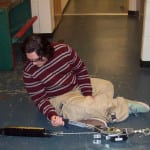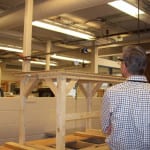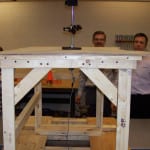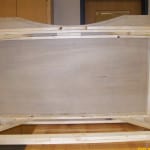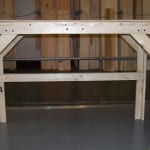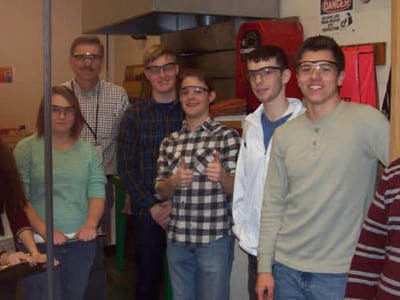
On February 6, student engineers in Mr. Jason’s Principles of Engineering class, studying structural engineering, performed a Point Load Test to determine the amount of weight their engineered structural table prototype can support with the least amount of deflection. The engineering team was given a design brief requiring that they create a collapsible table with removable legs for young adults between ages of 18-25, that is ergonomically designed for comfort, aesthetically pleasing, with a size limitation of 48” wide by 48” deep by 32” in height.
Materials provided for fabrication included 3/16” thick luan, furring strip, and corrugated cardboard used to create a glue-lam diaphragm top. Each student was required to research table designs and create concept sketches, a rough drawing, a scale drawing of their optimal solution. They also had to develop their material list, build a prototype, perform a Point Load and Shear Load Test using a strain gage and a pulley, use vectors to depict where stress and deformity occurred, use the test data to calculate the slope, plot and graph the data and create statistical models for force and deflection. They took pictures documenting their work, wrote an engineer report describing their design solution, test results, and improvements for redesign.
Students from Mr. Giumarra’s physics class participated during the load testing and analysis of data collected.
The students’ engineered structural table is an example of the application of “STEAM” (Science, Technology, Engineering, Artistic Design, and Mathematics) folded into a project-based learning unit activity in the high school’s technology program. Other units of study explored in Principles of Engineering include Civil, Mechanical, Electrical, Chemical & Environmental, and Systems Engineering.

